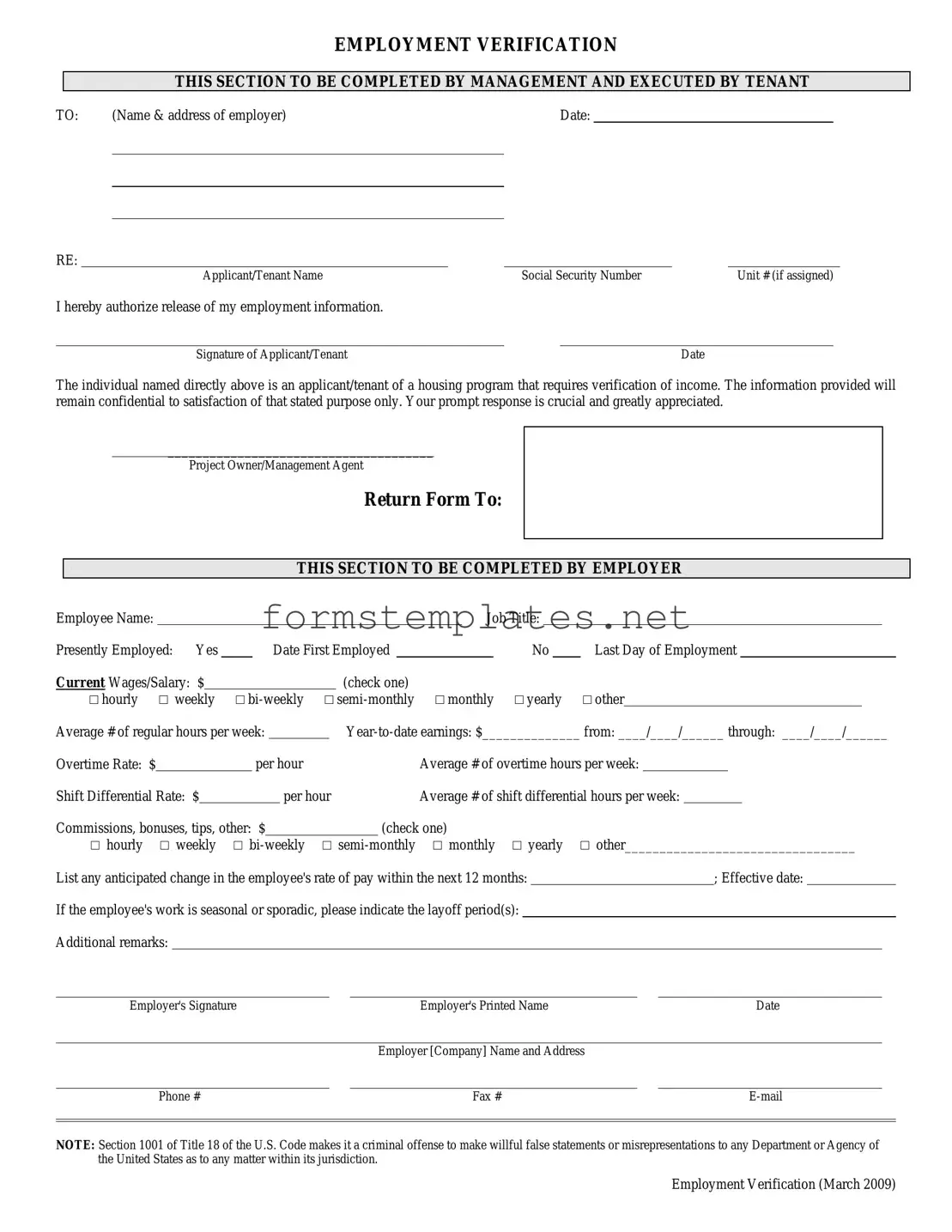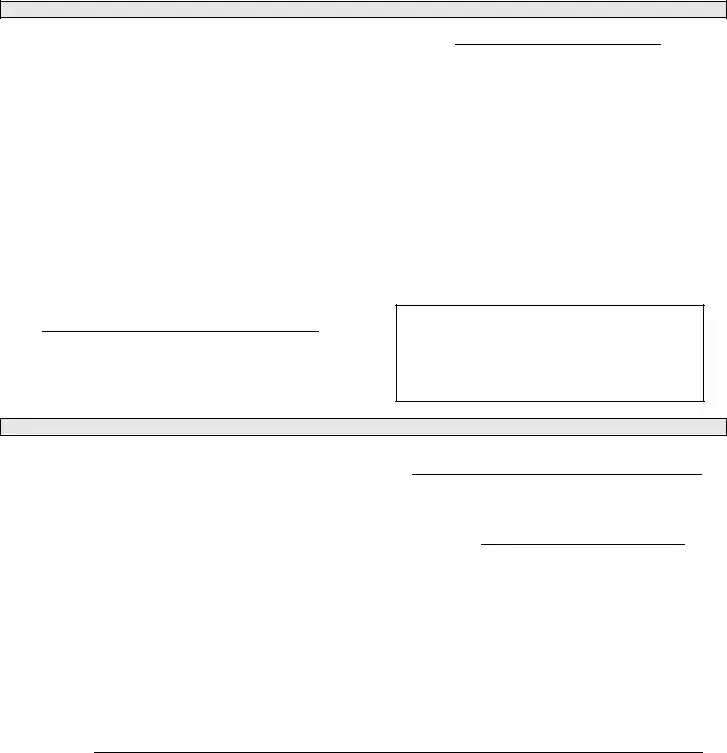An Employment Verification Form is a document used to confirm an individual's employment status. This form typically includes details such as the employee's job title, dates of employment, and salary information. Employers, lenders, and other organizations often request this information to assess an individual's qualifications or financial stability.
Various entities may request an Employment Verification Form, including:
-
Potential employers during the hiring process
-
Lenders when applying for loans or mortgages
-
Property managers for rental applications
-
Government agencies for benefits eligibility
Completing an Employment Verification Form generally involves the following steps:
-
Provide your personal information, including your full name and contact details.
-
Include the name and contact information of your current or former employer.
-
Specify your job title and the dates of your employment.
-
Indicate your salary or hourly wage, if required.
-
Sign and date the form to authorize the release of your information.
If your employer is hesitant to complete the Employment Verification Form, consider the following steps:
-
Discuss the situation with your HR department to understand their policies.
-
Provide reassurance about the confidentiality of the information.
-
Request a letter of employment instead, which may serve the same purpose.
Can I verify my own employment?
Yes, individuals can verify their own employment by requesting a letter or verification from their employer. Many companies have a standard process for this, often handled by the HR department. This letter can then be used as proof of employment when needed.
Typically, there is no fee for obtaining an Employment Verification Form from your employer. However, some third-party verification services may charge a fee for their services. It’s best to check with your employer or the service provider for specific details.
The time it takes to receive a completed Employment Verification Form can vary. Generally, employers aim to process such requests promptly, often within a few business days. However, factors such as company policies, workload, and the availability of personnel can affect the timeline. It’s advisable to allow sufficient time and follow up if necessary.

